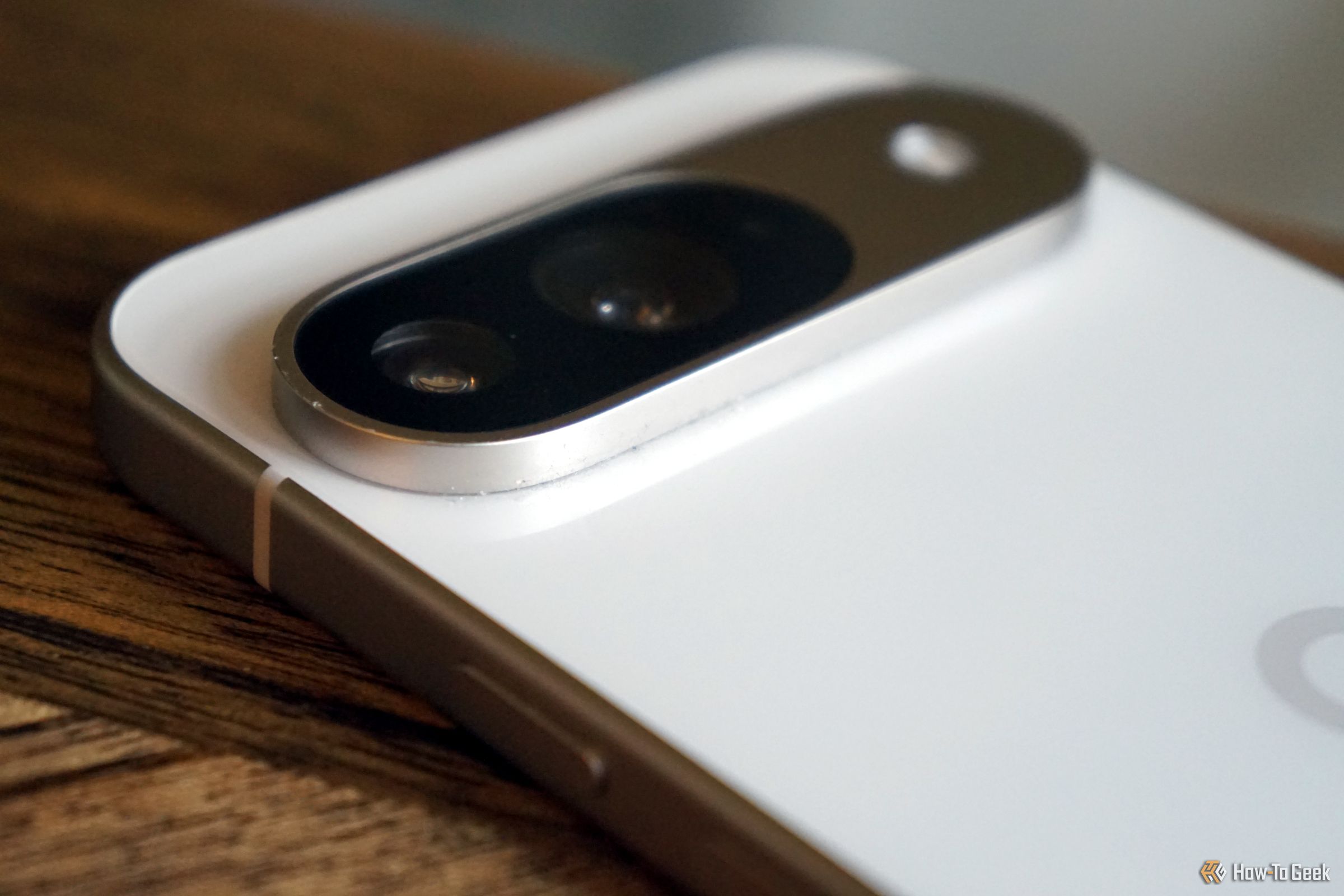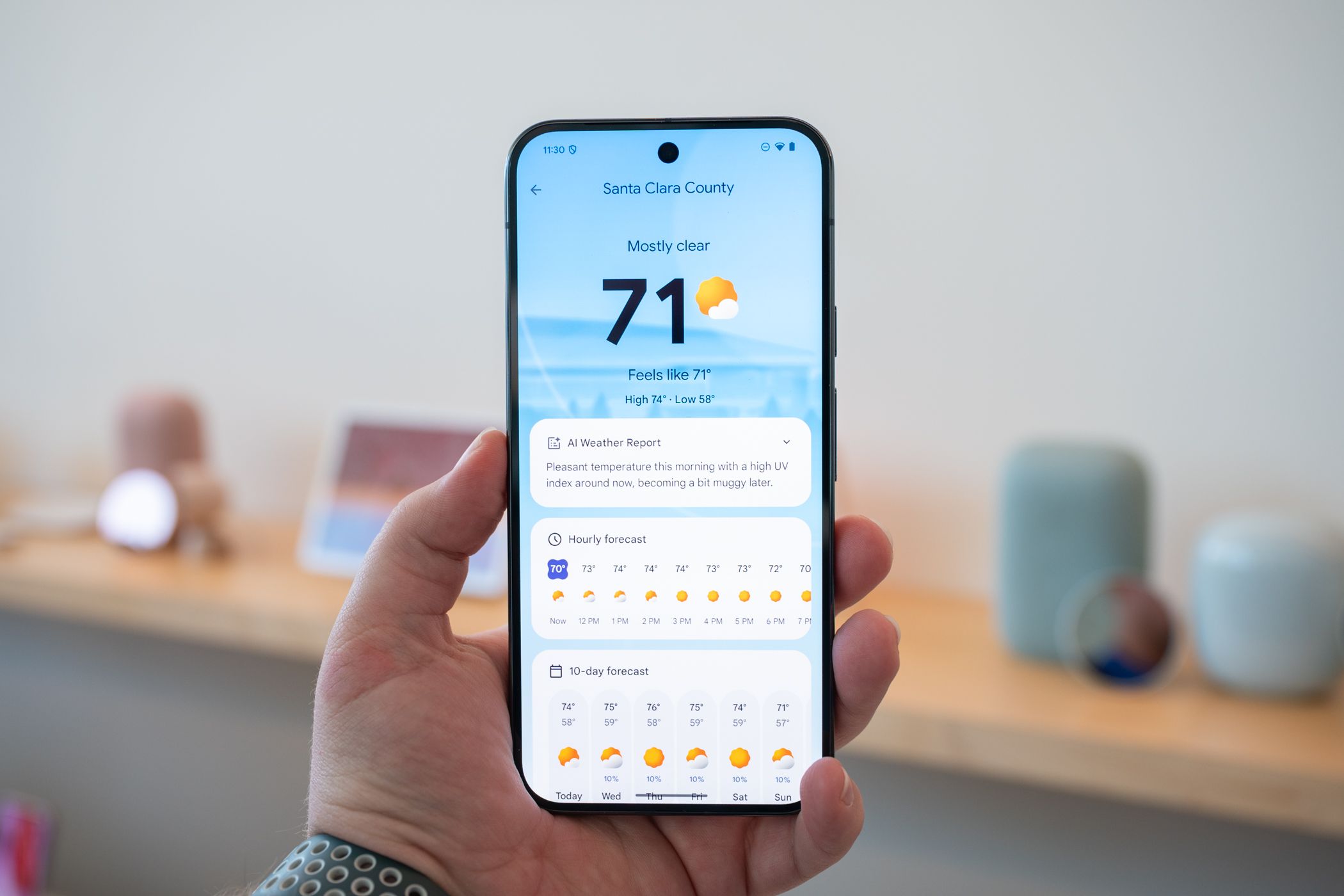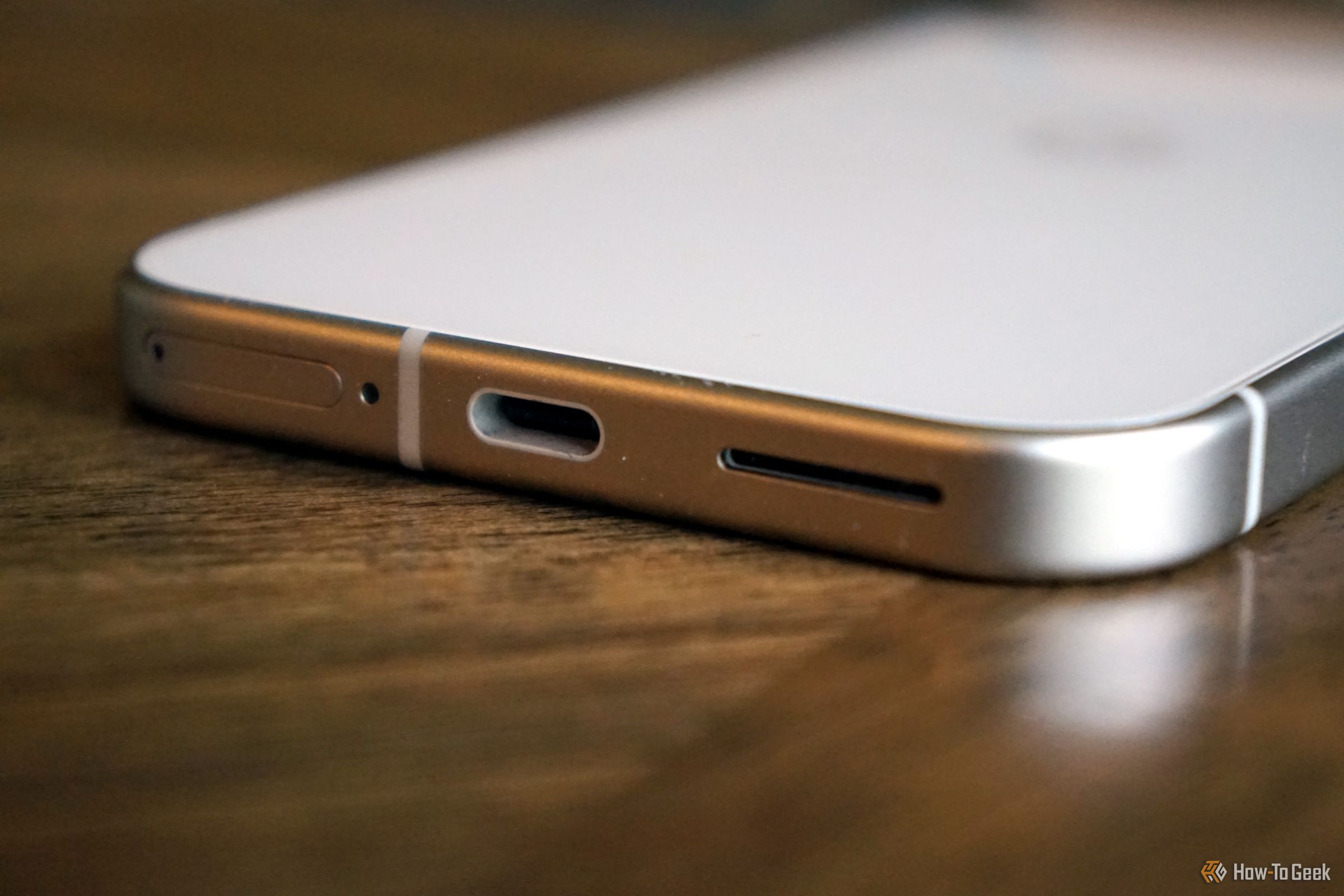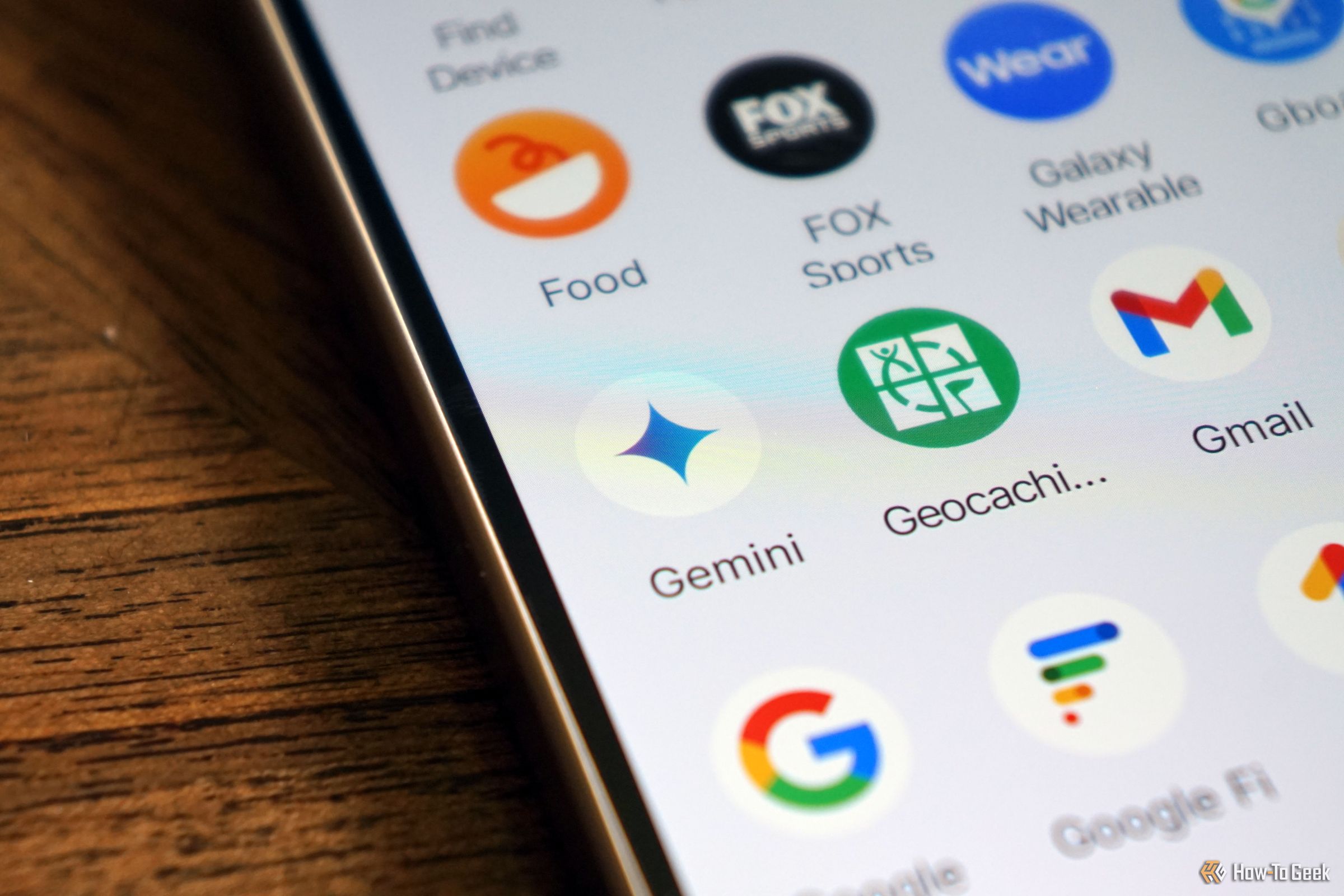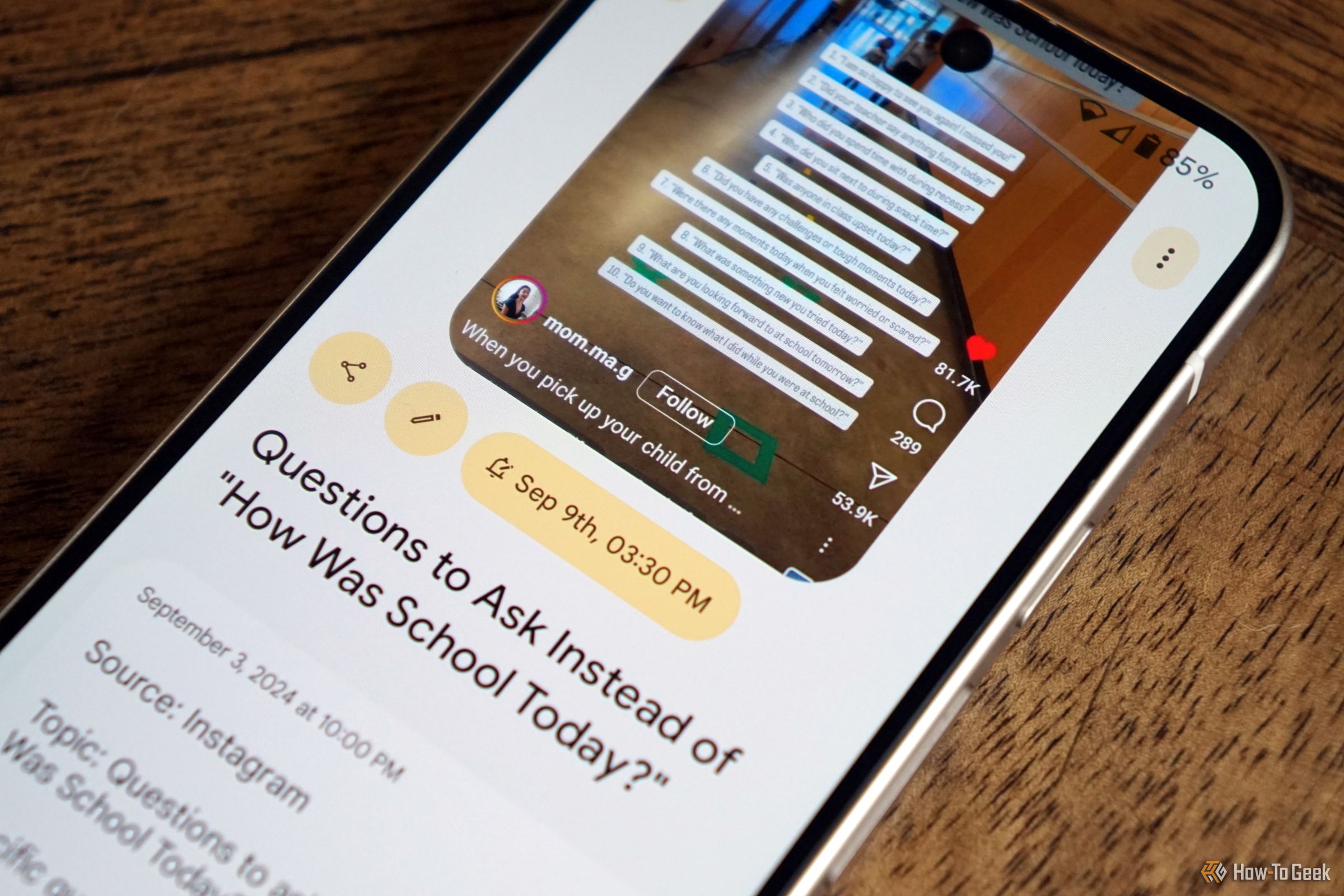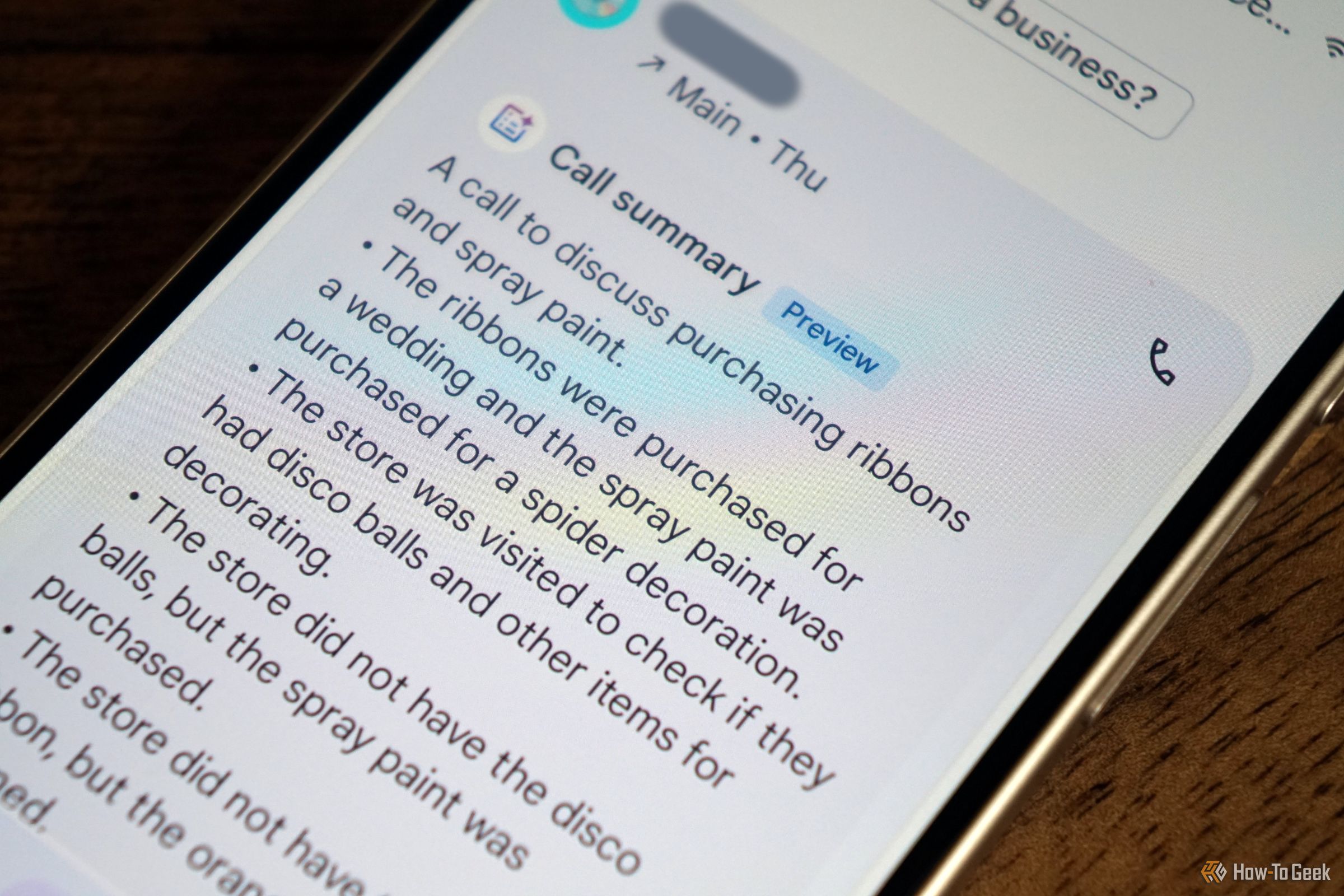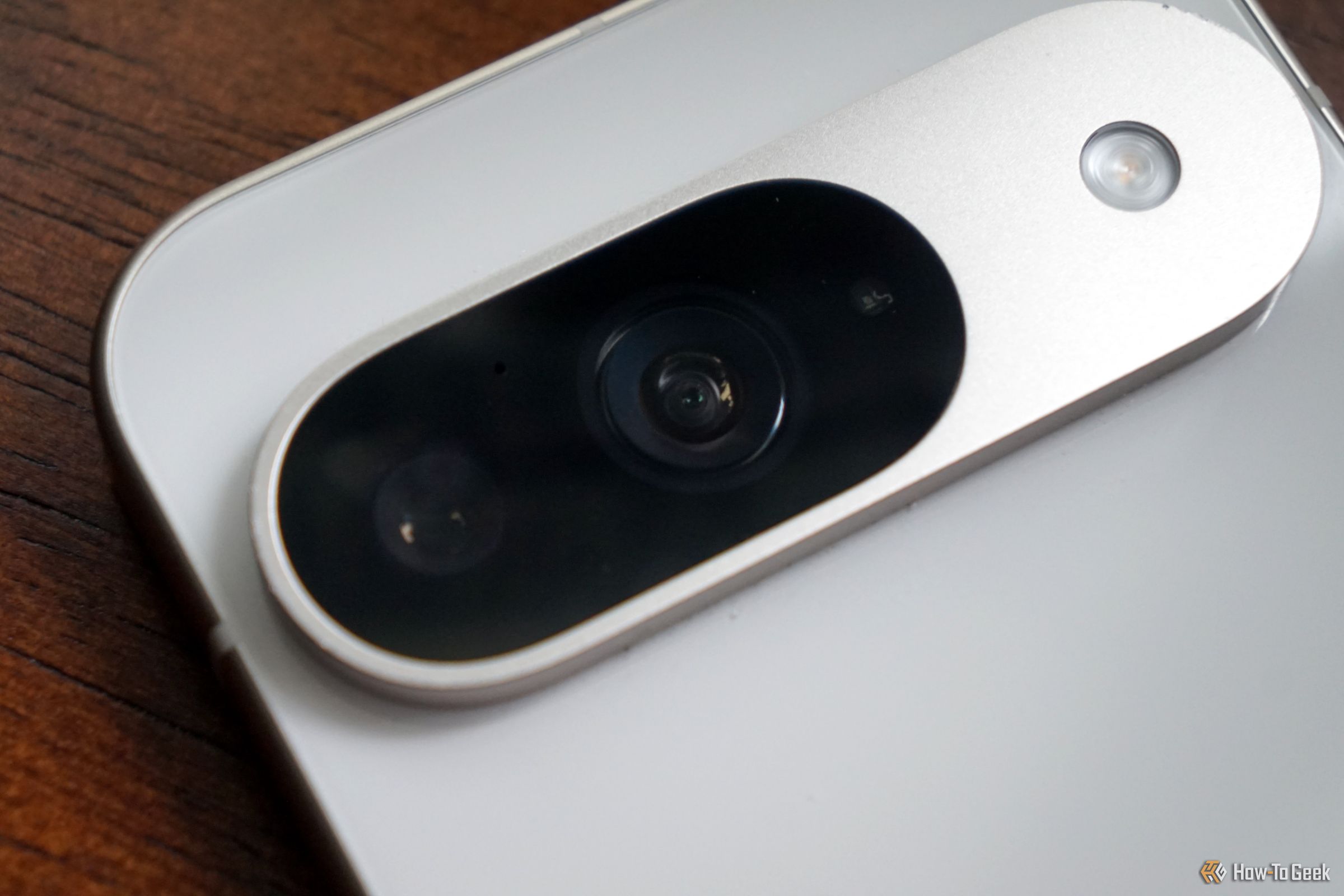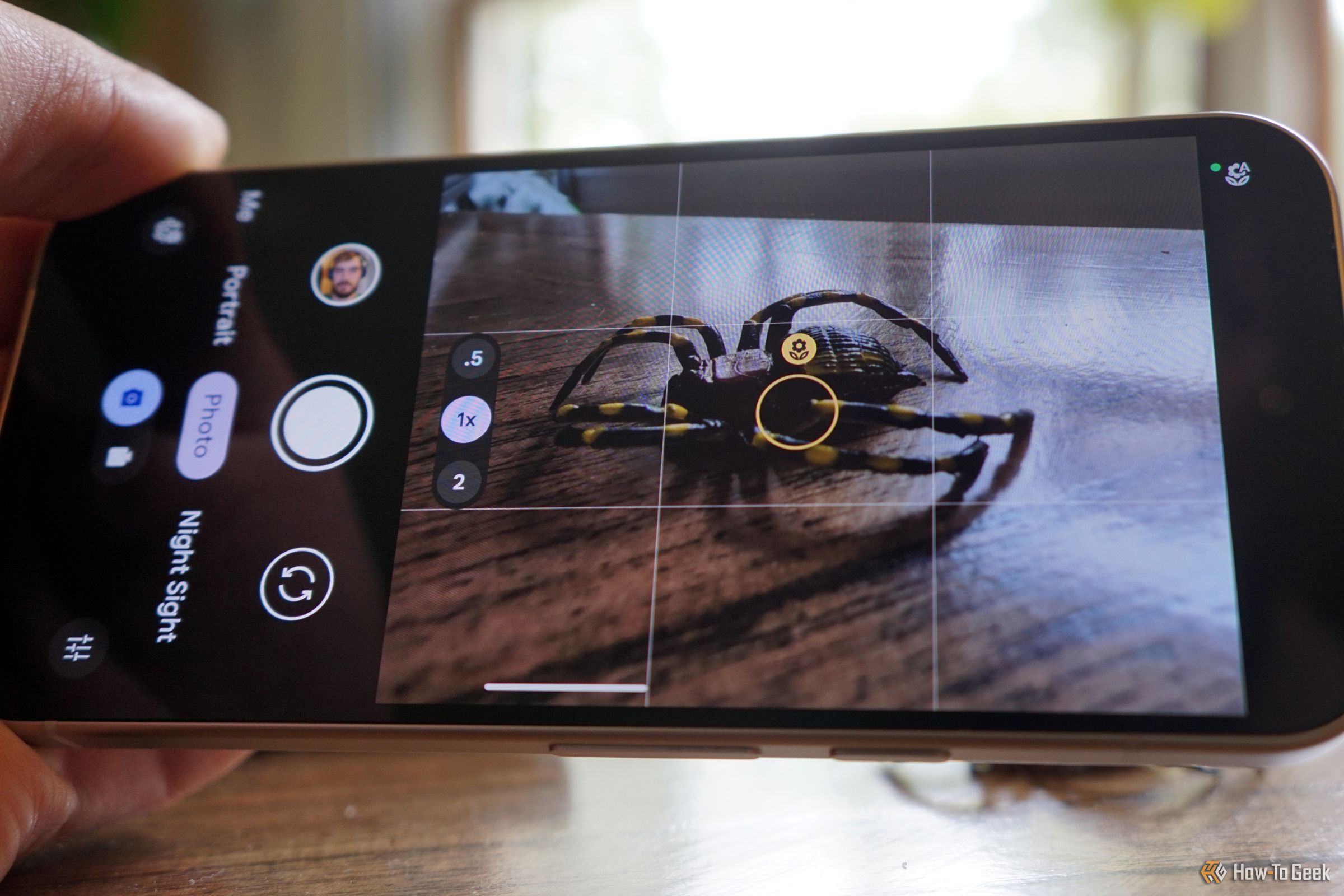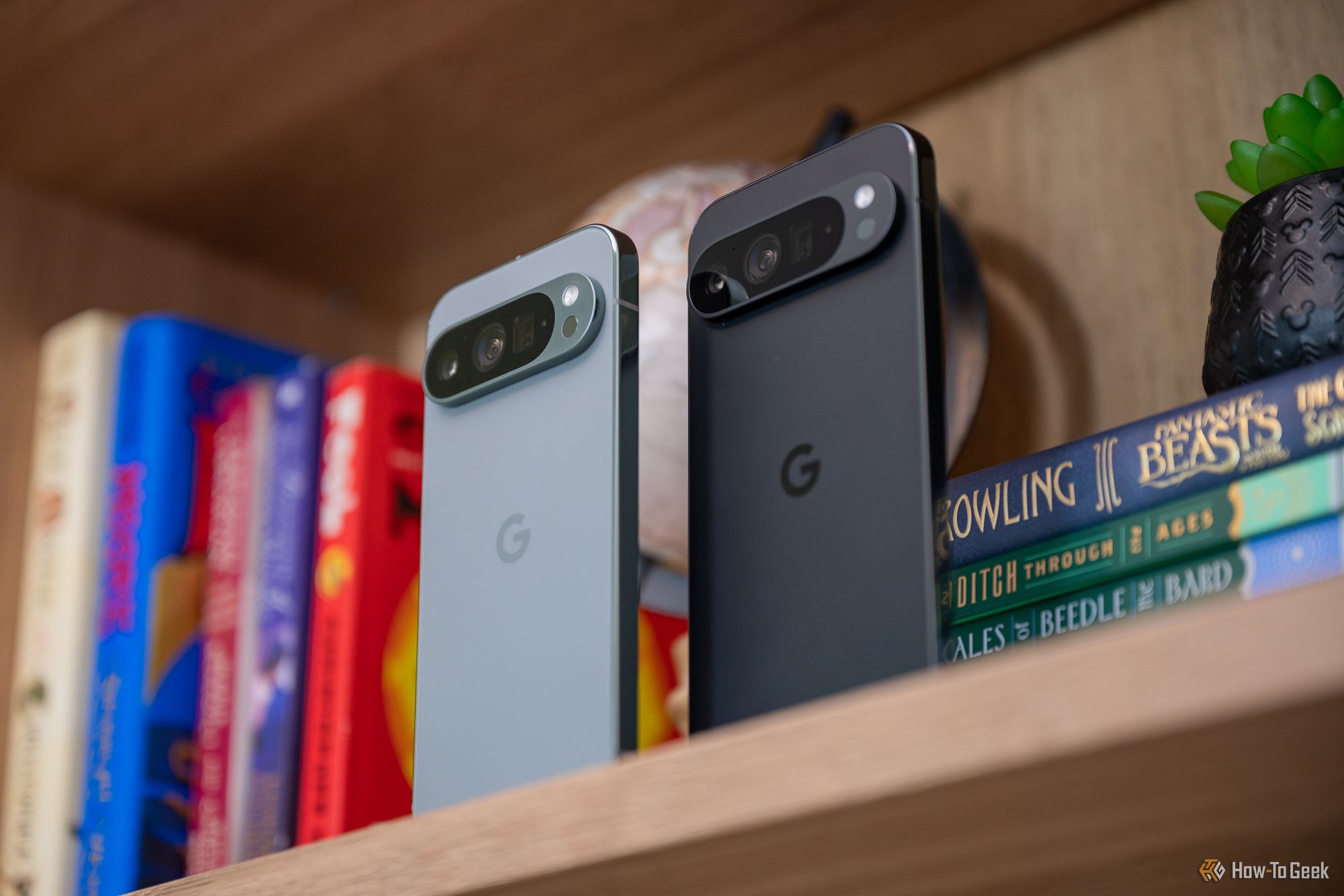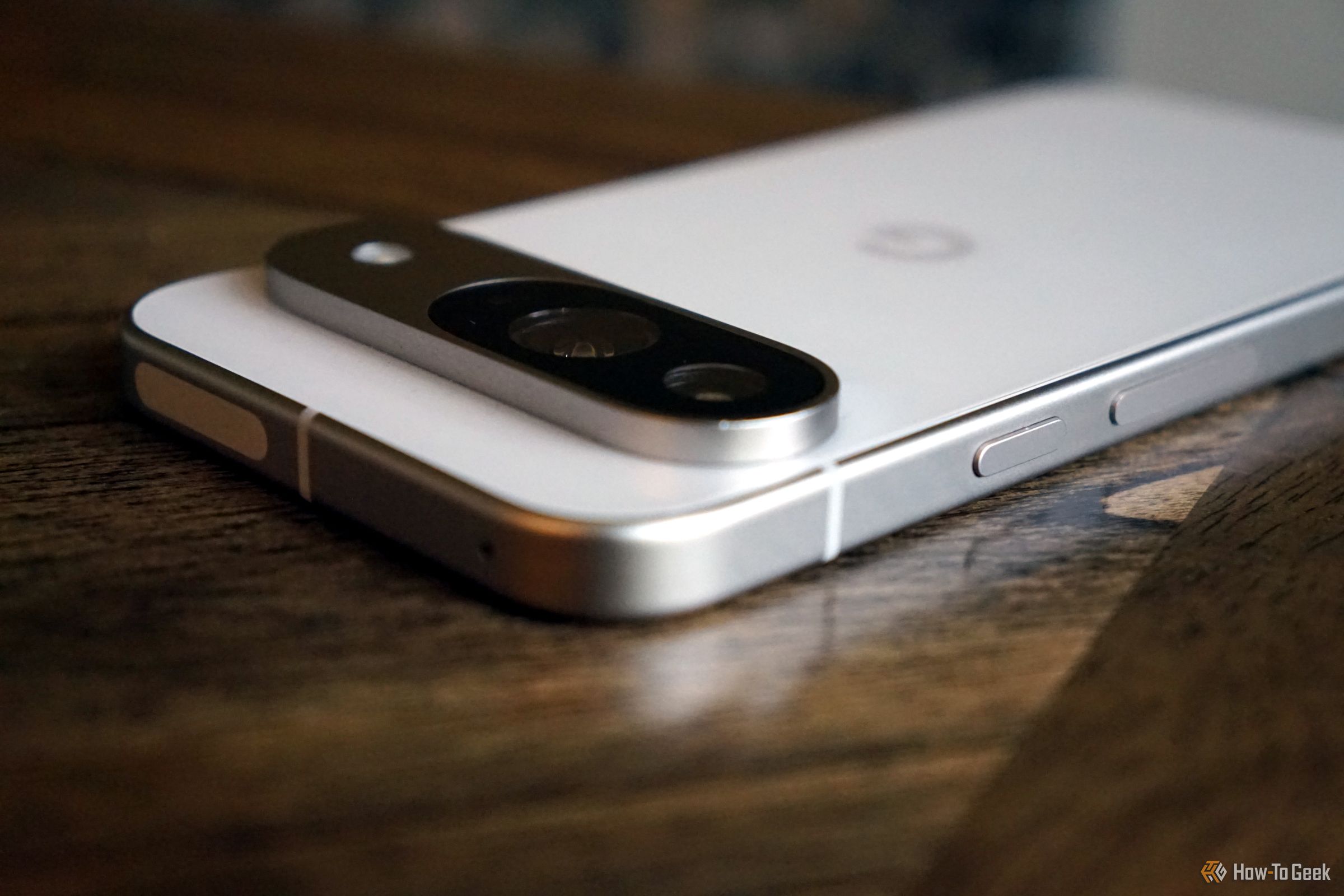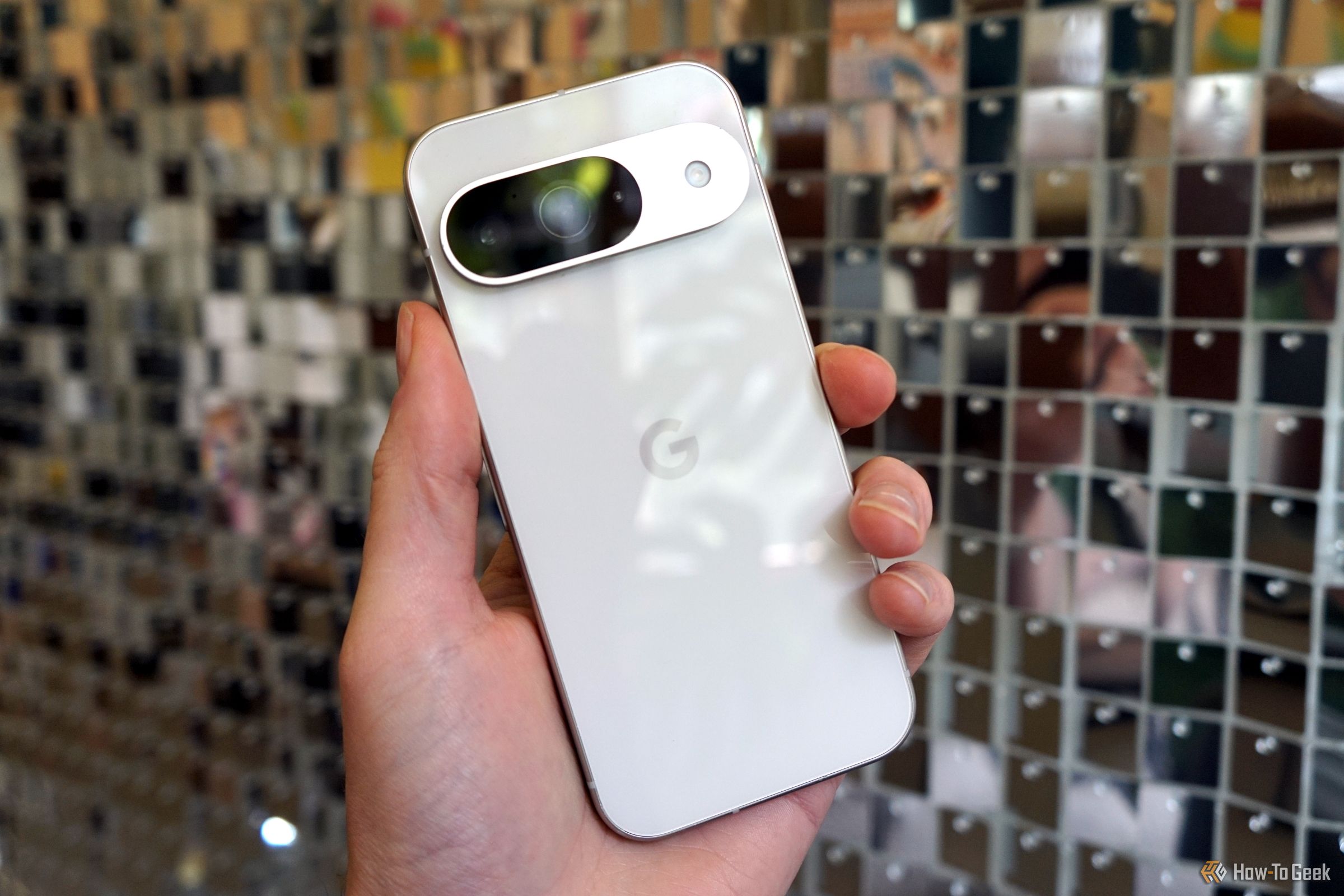
Key Takeaways
- The Google Pixel 9 is a fresh start for the series. It feels different, with bold design choices and top-notch performance.
- The design is comfortable and attractive. The camera bar provides a nice ledge for your fingers, and the phone is a good size.
- The AI features are improving. While imperfect, the “Pixel Screenshots” and “Call Notes” features show promise.
I didn’t realize how stale the Pixel series had become until I picked up the Google Pixel 9. The previous two Pixel phones were solid, but they were sequels—iterations of the same idea. That’s what makes the Pixel 9 feel so fresh and different. This is the Pixel series rebooted, and its AI features are more than a shameless cameo.
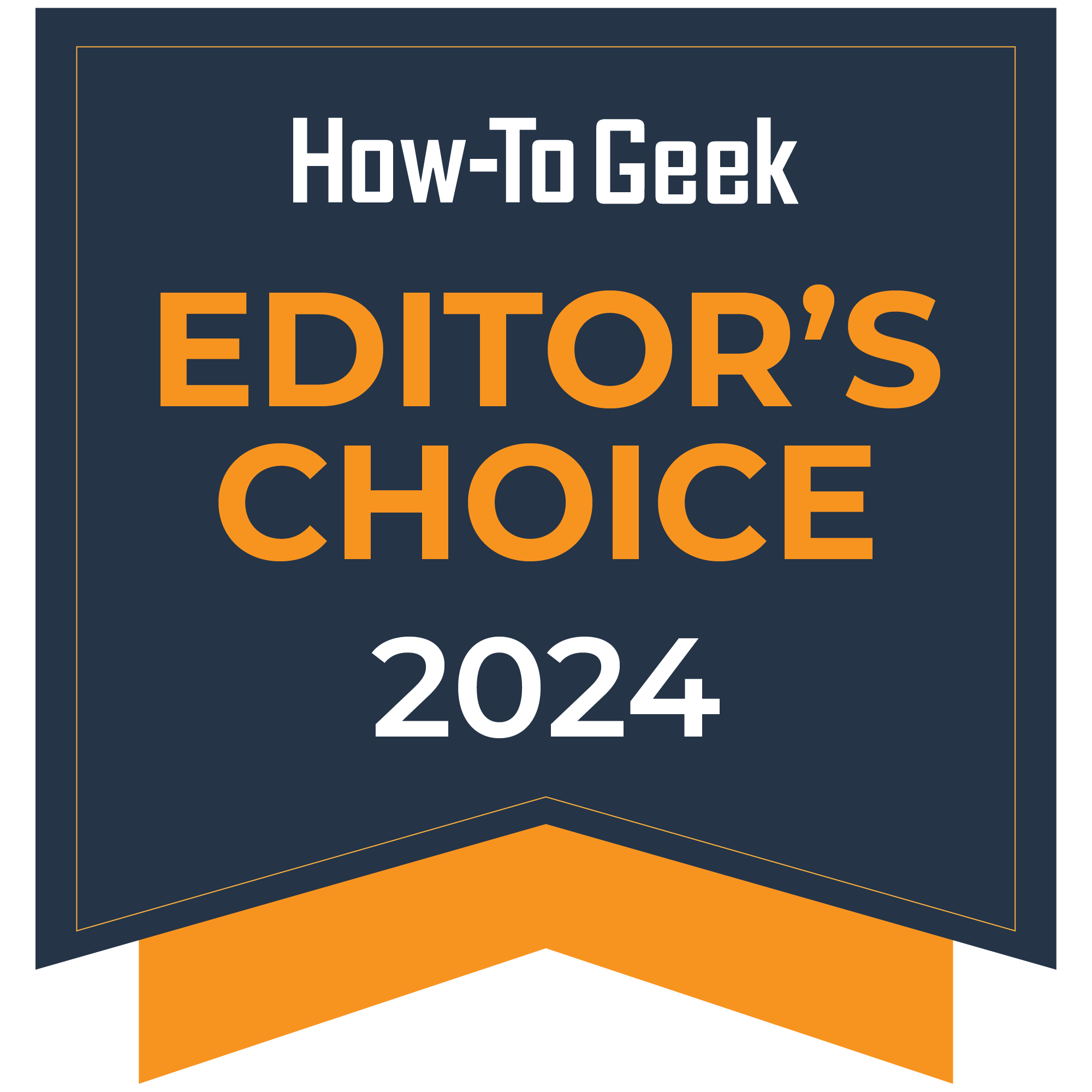
Google Pixel 9
The Google Pixel 9 features a sleek design with a powerful Tensor G4 processor, 12 GB of RAM, and a vibrant 6.3-inch Actua display, making it ideal for capturing stunning photos and videos with its advanced 50 MP main lens and 48 MP ultrawide camera. With improved durability and a fast-charging all-day battery, the Pixel 9 is built to handle daily challenges while delivering top-notch performance and AI-driven capabilities.
- A needed modern refresh of the classic Pixel design.
- Still the best-in-class camera quality.
- Great performance and solid battery life.
- Gemini AI features show promise, but not a selling point.
Price and Availability
The Pixel 9 is available from a wide variety of retailers, including the Google Store, Best Buy, Amazon, and all U.S. carriers. It starts at $799 for the 128GB model and $899 for 256GB. The phone can be purchased in four colors: Peony, Wintergreen, Porcelain, and Obsidian. The model featured in this review is 128GB in Porcelain.
Bold Design Choices and Top-Notch Performance
I was skeptical of the Pixel 9’s design when I saw the first photos. The Google Pixel 8—with its round corners and the camera bar smoothly transitioning into the sides of the phone—felt like the perfect culmination of Pixel design. The much sharper camera bar and more squared-off edges seemed like a step back.
Thankfully, my doubts about the design immediately melted away when I picked up the phone. To harken back to the early days of smartphone reviews, the Pixel 9 “feels great in the hand.” It’s a very comfortable phone to hold, and the camera bar still provides a nice ledge for your fingers to rest.
The size of the Pixel 9 is also quite nice. Despite having the same size display, it’s a tiny bit bigger than the Pixel 8 but smaller than the Google Pixel 7. Now, that may or may not be a good thing for you. I typically prefer the smaller Pixel phones, but this is the first time I’ve considered opting for the XL model.
The Pixel 9 features a beautiful 6.3-inch OLED display that boasts vivid colors, deep blacks, and excellent viewing angles. It has the same 120Hz refresh rate as the Pixel 9 Pro, but a slightly lower resolution of 2400 x 1080. The screen’s brightness is ample for both indoor and outdoor use, and the adaptive brightness feature intelligently adjusts the backlight based on ambient lighting conditions.
The in-display fingerprint sensor is relatively fast and accurate. I will say it’s better than previous Pixel phones, but I remain unimpressed with the technology. With any phone that has an in-display fingerprint sensor, I’m annoyed more times than I’m amazed. Thankfully, Face Unlock works better and has the same security class as fingerprints—i.e., it can be used for mobile payments, etc.
While not adorned with the “Pro” name, the Pixel 9 is powered by the same Google Tensor G4 processor as the Pixel 9 Pro and Pro XL. However, it does have a bit less RAM—12GB vs 16GB. Coming from my daily driver, the Pixel 7, the G4 SoC is a significant upgrade from the G2. The Pixel 9 feels more like a high-end flagship phone. I didn’t notice any throttling or the phone getting warm while trying to do heavy multitasking.
Another “Pro” feature you get with the Pixel 9 is the same 4,700mAh battery. I never ended a day with less than 20% battery remaining. The only real bummer in the battery department is the lack of Qi2 magnetic wireless charging. This is something I’ve been waiting for Android phones to adopt. I use a MagSafe-compatible case on my Pixel 7, and it works great with my MagSafe charging stand and magnetic wallet. Once you use MagSafe, it’s really annoying not to have it.
What the Pixel 9 does have is the typical fast wireless charging and 45W fast charging—though Google does not include the 45W USB-C power adapter in the box. With it, you can juice up to 55% in about 30 minutes.
The First AI Feature I Actually Want to Use
Strangely, the Pixel 9 series did not launch with Android 15—that’s coming very soon. The software experience is pretty standard for a Pixel phone. You get Android version updates, Pixel Drops, and security patches until August 2031.
As you would expect in 2024, many of the new software features revolve around those two letters we’ve heard ad nauseam: AI. My colleagueJustin Duino did an excellent job of explaining the AI features in his Pixel 9 Pro and 9 Pro XL review, so I won’t rehash it here. However, I wanted to highlight a couple of my experiences.
First and foremost, the “Pixel Screenshots” feature is, quite frankly, awesome. There’s a new bell icon on the screenshot preview pop-up that allows you to create a reminder with the screenshot. Google automatically pulls information from the screenshot to make it more useful. As someone who heavily relies on reminders to remember stuff, this is a game changer.
One such example was an Instagram Reel about questions you can ask when you pick your kid up from school instead of “How was school today?” I liked the suggestions and wanted to remember them the next time I picked up my son. Not only was I able to create a reminder, but it was automatically named “Questions to Ask Instead of ‘How Was School Today?” and the full text shown on the screen was pulled out and neatly formatted.
Every screenshot you take on the Pixel 9 gets put into the new “Screenshots” app, whether you create a reminder with it or not. This makes it easy to find your screenshot reminders and search for text that appears in them. It does come with the privacy concern of Google essentially scanning every screenshot you take, though. Fortunately, that process runs locally on the phone instead of in the cloud.
The other feature that I thought had a lot of potential was “Call Notes.” Basically, imagine someone listening to your phone conversation and taking notes for you. It’s a really cool idea in theory—especially for those long calls that meander through a wide range of topics. Unfortunately, it didn’t work that well in reality. The notes were often inaccurate, which defeats the entire purpose. Still, I appreciate that this is attempting something that could be genuinely useful, not just some AI gimmick.
Speaking of genuinely useful, there’s still not enough of that with Gemini. For example, I was reading about an event on a zoo’s website and wanted to add it to my calendar. So, I summoned Gemini, let it read the screen, and said, “Add to my calendar.” Gemini recited the time and date of the event back to me but said, “I cannot add events to your calendar yet.” Womp womp.
There’s no reason why that shouldn’t work. Gemini was smart enough to gather the event details from the page. It’s also smart enough to create a calendar event when I give it the details. There’s a disconnect there that leads to frustration. AI is supposed to make my life easier, and while there are glimpses of that, it’s not quite there yet.
Yes, Google Still Makes the Best Smartphone Cameras
Cameras still bring many people to the Pixel series, and the Pixel 9 continues Google’s excellent track record in this department. It is, however, where the lack of a “Pro” label comes into play the most. The Pixel 9 features two rear cameras, while the Pro and Pro XL have three.
Those two cameras are a 50MP main camera and a 48MP ultrawide camera—no telephoto lens. I don’t like when a phone that has two cameras opts for ultrawide as the secondary. Out in the real world, a telephoto camera is infinitely more useful. Thankfully, the Pixel 9’s 2X crop is pretty good, but it’s certainly not the Pro’s 5X optical zoom.
The main camera is exceptional, as I’ve come to expect from a Pixel. The ultrawide camera is very good, too, matching the coloring of the main camera better than previous Pixel phones. It does, however, have a decent amount of fisheye effect, which you may or may not like.
The Pixel 9 also features an interesting “Macro Focus” feature that utilizes the ultrawide camera. When the camera detects something that is very close to the lens, it automatically switches to the ultrawide camera and zooms in. This works surprisingly well, but I noticed the phone doesn’t always switch back to the main camera right away when macro focus isn’t needed.
The last camera to talk about is the selfie camera, and that’s the last area where the “Pro” models differentiate themselves. The Pixel 9 Pro and Pro XL have vastly improved 42MP front cameras, while the Pixel 9 has the same 10.5MP front camera as the previous two generations.
Pixel 9 vs Pixel 9 Pro/9 Pro XL
I’ve been peppering in some details about what the Pixel 9 lacks compared to the Pro models, but let’s take a closer look at that. The main thing is the cameras. With the Pixel 9 Pro or 9 Pro XL, you’re getting an extra 48MP telephoto camera with 5X optical zoom and a much better 42MP selfie camera.
The next difference is display quality. The Pixel 9 has a pretty standard OLED panel with 120Hz refresh rate, 2,700 nits peak brightness, and 2400 x 1080 resolution. Meanwhile, the Pro models have LTPO OLED panels, 3,000 nit peak brightness, and 2856 x 1280/2992 x 1344 resolution.
The last significant difference is RAM. With the Pixel 9 you’re getting a respectable 12GB, while the Pro models offer 16GB. However, all three feature the Google Tensor G4 chip and 128GB or 256GB of storage, but the Pro models are also available in 512GB or 1TB.
Should you opt for the Pixel 9 Pro or 9 Pro XL? For starters, if you want a bigger phone, the decision is very easy—get the 6.8-inch Pixel 9 Pro XL. Screen size aside, it’s really a matter of camera preference and price. The Pixel 9 Pro is $200 more than the Pixel 9 for a telephoto camera and better selfies.
Should You Buy the Google Pixel 9?
I didn’t go into this review with the same excitement as usual for a new Pixel phone. The design changes didn’t impress me in the photos I had seen, and I was preparing myself to be slapped in the face with AI! AI! AI! Thankfully, I’m ending my time with the Google Pixel 9 with more excitement than usual.
The Pixel 9 is the modern, premium refinement that I didn’t realize the Pixel series needed so badly. I’ve been happy with Pixel phones in the past, but the Pixel 9 feels different. It has excellent, high-end design and build, the best cameras you can get, simple, clean software with many years of support, and even some AI features that don’t feel like gimmicks. This is the Android phone for the masses.
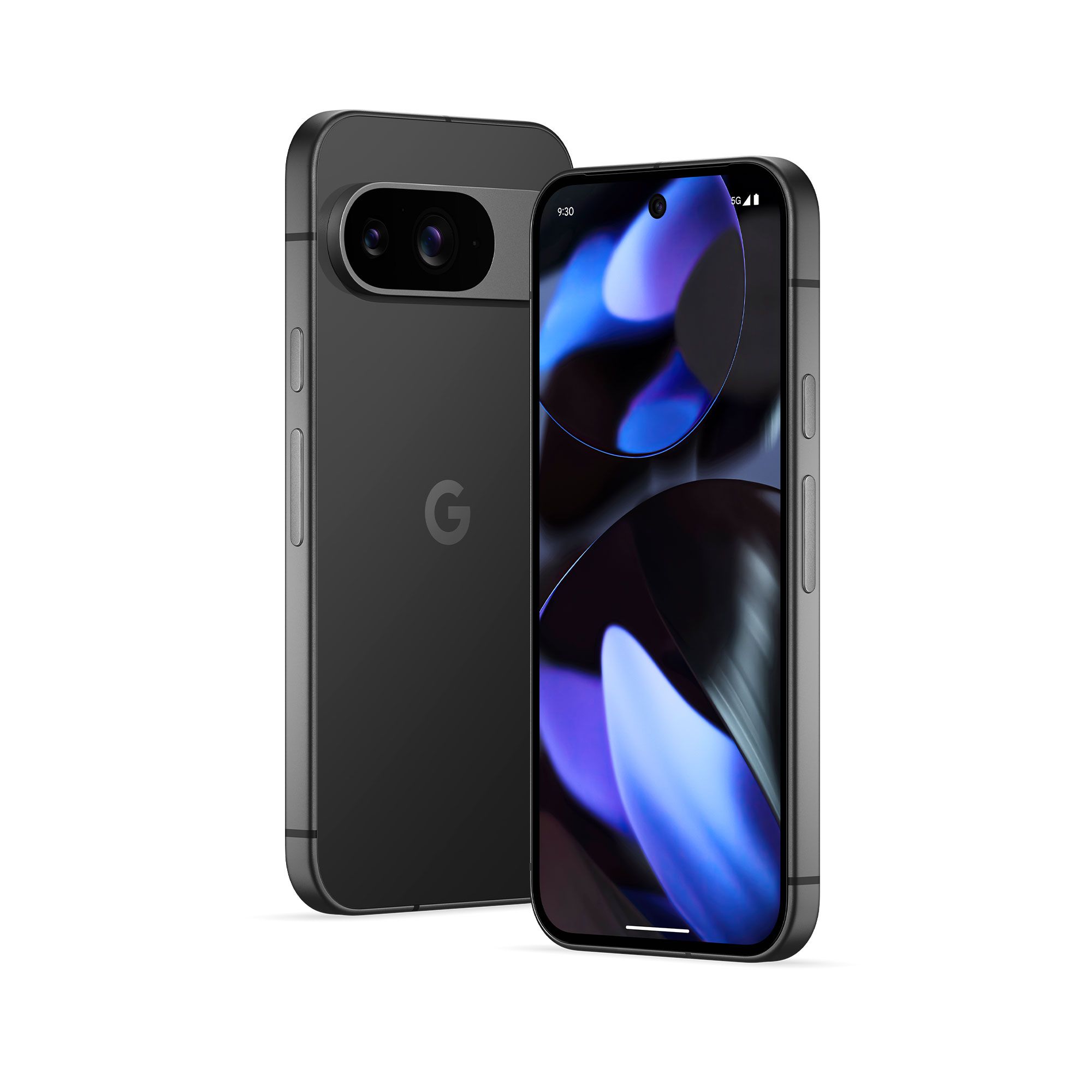

Google Pixel 9
The Google Pixel 9 features a sleek design with a powerful Tensor G4 processor, 12 GB of RAM, and a vibrant 6.3-inch Actua display, making it ideal for capturing stunning photos and videos with its advanced 50 MP main lens and 48 MP ultrawide camera. With improved durability and a fast-charging all-day battery, the Pixel 9 is built to handle daily challenges while delivering top-notch performance and AI-driven capabilities.
Source link


